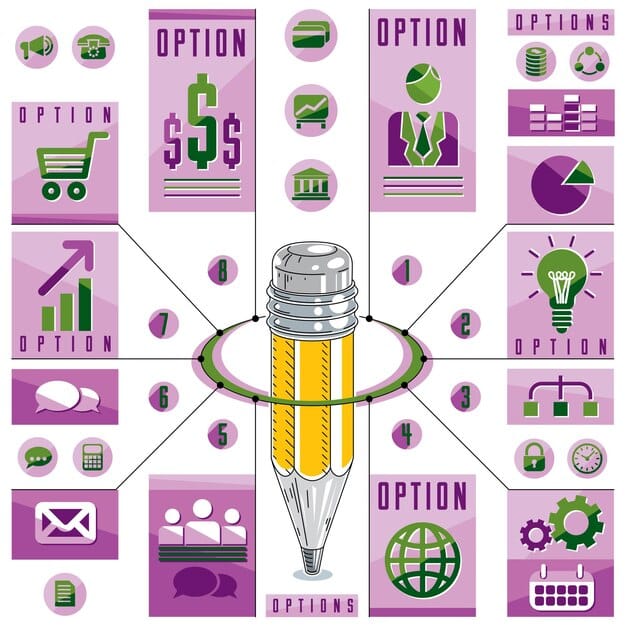Fintech Startup Marketing: Reach Your Audience on a Budget

Fintech startup marketing on a limited budget requires creative strategies, including content marketing, social media engagement, strategic partnerships, and leveraging free tools to reach the target audience effectively.
Navigating the marketing landscape as a fintech startup can be challenging, especially when resources are limited. Fintech startup marketing: how to reach your target audience on a limited budget explores cost-effective strategies to maximize your reach and impact.
Understanding Your Target Audience
Before diving into marketing tactics, understanding your target audience is paramount. This foundational step ensures that your marketing efforts are directed at the right people, maximizing the impact of your limited budget.
Defining Your Ideal Customer
Start by creating detailed customer personas. What are their demographics, pain points, and financial needs? Understanding these details helps you tailor your marketing messages effectively.
Conducting Market Research
Utilize free or low-cost market research tools to gather insights. Surveys, social media polls, and analyzing customer feedback can provide valuable information without breaking the bank.
- Identify key demographics and behaviors of your target audience.
- Analyze their financial needs and challenges.
- Understand their preferred communication channels.
- Refine your customer personas based on the market research findings.
By thoroughly understanding your target audience, you can create marketing campaigns that resonate with them, increasing engagement and conversion rates.
Leveraging Content Marketing
Content marketing is a powerful tool for fintech startups on a budget. By creating valuable and engaging content, you can attract and retain your target audience without spending a fortune on advertising.
Creating High-Quality Blog Posts
Produce blog posts that address your audience’s questions and concerns. Topics can range from financial literacy to the benefits of using your fintech solutions.
Developing Informative Infographics
Infographics are visually appealing and easy to share. They can simplify complex financial concepts and showcase the value of your offerings.

- Publish blog posts on relevant and trending financial topics.
- Create infographics that simplify complex financial concepts.
- Develop case studies showcasing successful customer outcomes.
- Produce e-books and whitepapers offering in-depth financial advice.
Content marketing helps establish your fintech startup as a thought leader, building trust and credibility with your target audience.
Harnessing Social Media Marketing
Social media platforms offer incredible opportunities for fintech startups to connect with their target audience. With a strategic approach, you can build a strong online presence without incurring significant costs.
Engaging on Relevant Platforms
Identify the social media platforms where your target audience spends their time. Focus your efforts on these channels to maximize engagement.
Creating Compelling Content
Share valuable content, including blog posts, infographics, and videos. Engage with your audience by responding to comments and messages promptly.
Utilize social media analytics to track your performance. Identify what content resonates most with your audience and adjust your strategy accordingly.
Consistent and engaging social media marketing can drive traffic to your website, generate leads, and build brand awareness for your fintech startup.
Utilizing Email Marketing
Email marketing remains a highly effective strategy for fintech startups to nurture leads and drive conversions. With a well-crafted email campaign, you can reach your target audience directly and personally.
Building an Email List
Offer valuable incentives, such as e-books or webinars, in exchange for email sign-ups. Segment your list to target different customer groups with relevant messages.
Crafting Engaging Emails
Personalize your emails with the recipient’s name and tailor the content to their interests. Include clear calls to action to encourage engagement and conversions.

- Offer free financial advice or resources to encourage sign-ups.
- Segment your email list based on customer behavior and demographics.
- Personalize email content to resonate with individual subscribers.
- Track email metrics to optimize your campaigns for better results.
Email marketing allows you to maintain a direct line of communication with your audience, fostering relationships and driving business growth.
Exploring Strategic Partnerships
Strategic partnerships can be a game-changer for fintech startups looking to expand their reach. By collaborating with complementary businesses, you can tap into new customer bases and amplify your marketing efforts.
Identifying Potential Partners
Look for businesses that share your target audience but offer non-competing products or services. This could include financial advisors, accountants, or related tech companies.
Creating Mutually Beneficial Agreements
Develop partnerships that offer value to both parties. This could involve cross-promotion, joint marketing campaigns, or co-branded content.
Leverage your partner’s marketing channels to reach a wider audience. This could include email newsletters, social media posts, or website placements.
Strategic partnerships enable you to access new markets and expand your brand’s visibility without incurring significant marketing expenses.
Analyzing and Optimizing Your Efforts
Marketing is an iterative process. Continuously analyzing your results and optimizing your strategies is crucial for maximizing your return on investment, especially on a limited budget.
Tracking Key Metrics
Monitor key performance indicators (KPIs) such as website traffic, conversion rates, and customer acquisition cost (CAC). These metrics provide insights into the effectiveness of your marketing efforts.
A/B Testing Different Strategies
Experiment with different marketing messages, channels, and tactics. A/B testing allows you to identify what resonates most with your audience and refine your approach accordingly.
Use data analytics tools to gain deeper insights into customer behavior. Identify patterns and trends that can inform your marketing decisions.
By continuously analyzing and optimizing your marketing efforts, you can make data-driven decisions that improve your results and maximize your budget.
| Key Point | Brief Description |
|---|---|
| 🎯 Target Audience | Understand your audience’s needs and preferences to tailor your marketing efforts. |
| ✍️ Content Marketing | Create valuable content that attracts and engages your target audience. |
| 📱 Social Media | Engage your audience on relevant platforms to build brand awareness. |
| 🤝 Partnerships | Collaborate with complementary businesses to expand your reach. |
[FAQ Section]
Content marketing, social media engagement, email marketing, and strategic partnerships are among the most cost-effective strategies. These tactics allow you to reach your target audience without spending a fortune on advertising.
Utilize free or low-cost market research tools, such as surveys and social media polls. Analyze customer feedback and identify key demographics and behaviors to understand your ideal customer.
Create blog posts, infographics, case studies, and e-books that address your audience’s questions and concerns. Focus on providing valuable information that helps them improve their financial lives.
Engage on relevant platforms, create compelling content, and respond to comments and messages promptly. Use social media analytics to track your performance and adjust your strategy accordingly.
Strategic partnerships allow you to tap into new customer bases and amplify your marketing efforts without incurring significant costs. Collaborate with complementary businesses to reach a wider audience.
Conclusion
Effective fintech startup marketing: how to reach your target audience on a limited budget requires a blend of creativity, data-driven decision-making, and a focus on building meaningful relationships with your audience. By leveraging cost-effective strategies like content marketing, social media, and strategic partnerships, you can maximize your impact and achieve sustainable growth.





